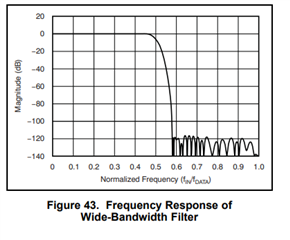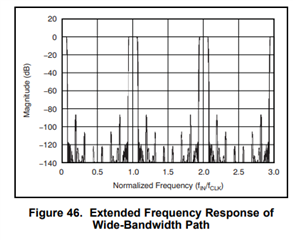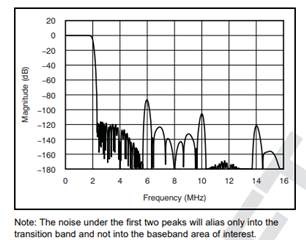In the datasheet for the ADS1675, the second paragraph of the Description on page 1 says that the Wideband path has a stop band attenuation of 86dB. This is also listed in the datasheet on page 3 under DIGITAL FILTER CHARACTERISTICS (WIDE-BANDWIDTH PATH), Stop band attenuation = 86dB.
On page 21, figure 43 seems to show the stop band of the frequency response to be approximately 115dB.
Can you explain where the 86dB comes from, when the filter response looks like 115dB?
Adding to the confusion, the Revision history shows that the 86dB was once 115dB in a previous revision of the datasheet.




